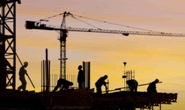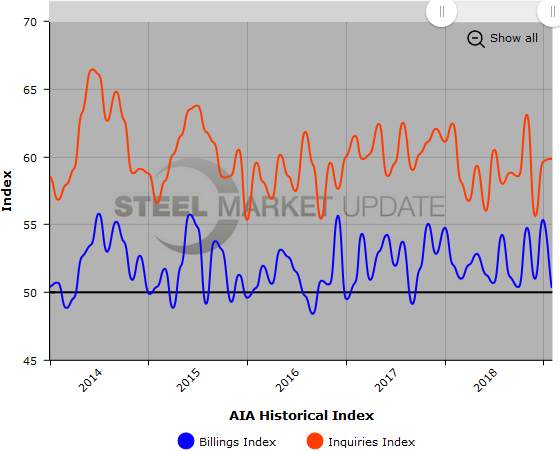Economy

Architecture Billings Soften in February
Written by Sandy Williams
March 20, 2019
The February Architecture Billings Index, a leading indicator of construction activity, dipped to 50.3 in February from 55.6 in January. Billings growth softened last month, said the American Institute of Architects, but indicators of work in the pipeline, including inquiries into new projects and the value of new design contracts, remained positive.
“Overall business conditions at architecture firms across the country have remained generally healthy,” said AIA Chief Economist Kermit Baker. “Firms in the South recorded continued strong design activity, likely reflecting a healthy regional economy and ongoing rebuilding from the catastrophic 2018 hurricane season.”
ABI Highlights:
Regional averages: South, 58.3; West, 51.6; Northeast, 51.5; and Midwest, 51.3.
The sector index breakdown: mixed practice, 57.2; commercial/industrial, 53.9; multi-family residential, 51.6; and institutional, 50.9.
The project inquiries index was 59.8, and the design contracts index was 53.1.
Below is a graph showing the history of the AIA Billings and Project Inquiries Indexes. You will need to view the graph on our website to use its interactive features; you can do so by clicking here. If you need assistance logging in to or navigating the website, please contact us at info@SteelMarketUpdate.com.


Sandy Williams
Read more from Sandy WilliamsLatest in Economy

New York state manufacturing index drops again in April
Firms were pessimistic, with the future general business conditions index falling to its second lowest reading in the more than 20-year history of the survey

Construction adds 13,000 jobs in March
The construction sector added 13,000 jobs, seasonally adjusted, in March, but tariffs could undermine the industry.

Supply chains, end-users brace for impact from tariffs
Supply chains are working through what the tariffs mean for them

ISM: Manufacturing expansion loses steam after two months of growth
US manufacturing activity slowed in March after two straight months of expansion, according to supply executives contributing to the Institute for Supply Management (ISM)’s latest report.

Chicago Business Barometer rose to 16-month high in March
The Chicago Business Barometer increased for the third-consecutive month in March. Despite this, it still reflects contracting business conditions, as it has since December 2023.
